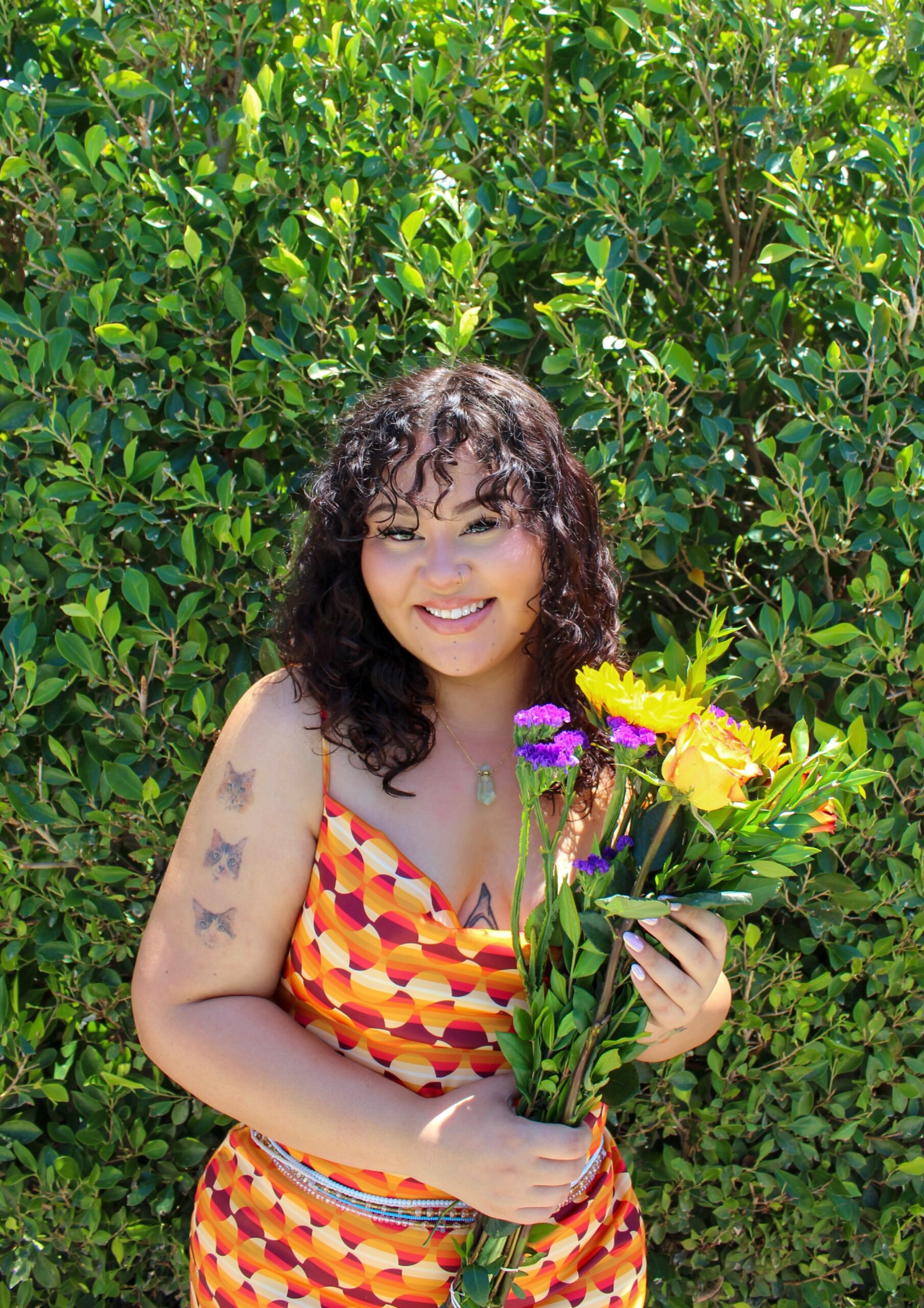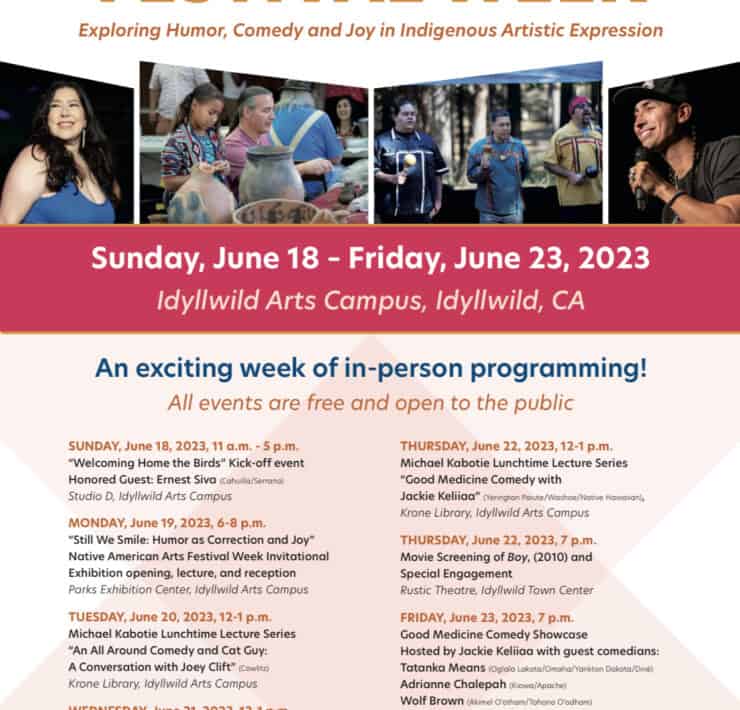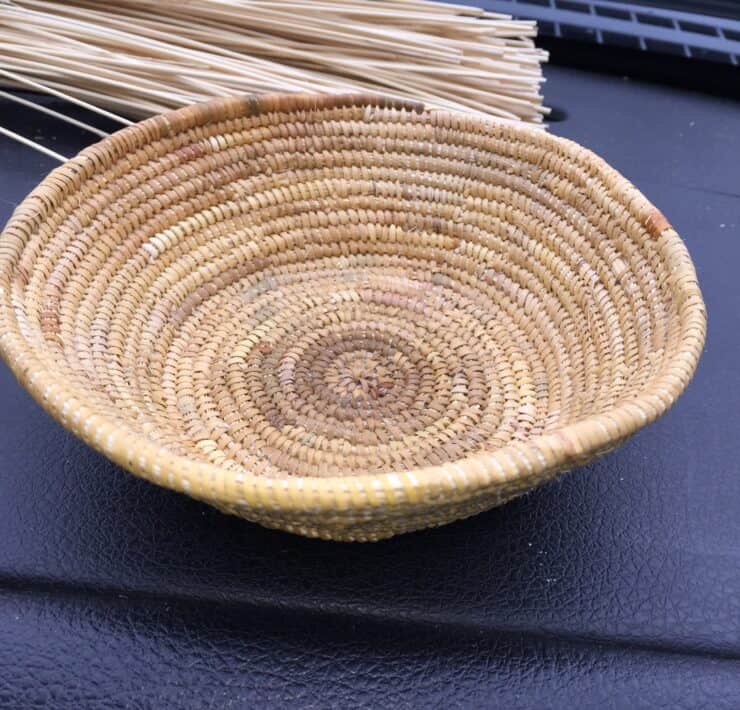
By Emily Clarke
Ramona Lubo (1853-1922) is most commonly known as the main character in the controversial Helen Hunt Jackson novel, the star of the Ramona Bowl Pageant, and as an extremely valued Cahuilla basket weaver. However, Ramona was also my great-great-great aunt. Her life was a series of tragedies that were later romanticized in the various forms of media created about her story. As a Cahuilla woman, she was a botanist, artist, mother, provider, and more. If you know Ramona’s story, you know that her husband, Juan Diego was wrongly accused of stealing from a White man who later shot and killed Juan in front of Ramona. As many Native people were during this time, Ramona and her basketry became a sort of “tourist attraction” for Non-Natives. However, despite her gaining popularity, she was a Native woman attempting to sustain herself in the early 1900’s, therefore most of her precious baskets were sold for the sake of survival. This is not uncommon for Native people historically. Many of my own ancestors were forced to sell items of cultural and familial significance in order to put food on the table, which is why my own family are without heirlooms.
In 2021, Weshoyot Alvitre (Tongva) came across a basket on Ebay that the seller claimed to have been made by Ramona Lubo. Weshoyot was familiar with the story of Ramona and had been working on an exhibit alongside Meranda Roberts (Numu and Xicana), Roseanne Hamilton (Cahuilla), and Lorene Sisquoc (Enrolled Fort Sill Apache and Mountain Cahuilla descendant). Weshoyot was an illustrator for the Field Museum exhibit, “Native Truths: Our Voices, Our Stories,” which highlighted Cahuilla basketry. One of the baskets within the exhibit was Ramona’s star-design basket. Weshoyot knew the basket she had found on Ebay was very possibly one of Ramona’s, however she was still skeptical. The basket had been owned by various basket collectors and traders, and somehow ended up at the top of Weshoyot’s Ebay search. After getting more information from the seller, Weshoyot decided the basket was most likely Ramona’s, and knew she had to help return it to its family.
“It felt like the right thing to do, even though I practically had an anxiety attack over how much it cost. It was a lot of money, but at the same time it was priceless,” Weshoyot tells me.
After having the delicate basket in-hand for a few months, Weshoyot attended a weaving circle at the Benton Museum of Art along with Meranda Roberts, Lorene Sisquoc, Roseanne Hamilton, and Gerald Clarke Jr. (Cahuilla). After the event, Weshoyot turned to Roseanne Hamilton for ID confirmation as well as to help connect her with Ramona’s descendants. This is when my dad, and Ramona Lubo’s great-great nephew, Gerald, officially enters the story.
“White people get to have a family history,” Gerald says, “they have stories about ‘Great Grandmother’s china’ or ‘Grandpa’s favorite rifle,’ but poor brown people often don’t have that luxury.
Gerald and Weshoyot had previously been in contact about art, basketry, and various other things through social media, so it was surprising to Weshoyot that the basket she had been unsure of what to do with for so long came from the family of someone she already knew. After a few emails back and forth as well as help from Roseanne, Gerald drove from his ancestral home on the Cahuilla Reservation, all the way to Weshoyot’s house in Ventura to pick up the basket as well as thank and reimburse her in person. It is rare for an act of repatriation to happen outside of an institution as well as outside of a tribal office, so the act of passing the extremely valuable basket from one pair of Native hands to another was emotional.
“I was so nervous to give it back to him, because I get emotional thinking about the lives these items live and what the people have been through. I just felt like Ramona got treated so poorly in her lifetime, so I was so happy to be able to hand the basket back to one of her descendants, it felt really good,” Weshoyot admits.
The repatriation of cultural items is something that Native tribes across the state are pursuing. So many institutions, whether it be museums, universities, or historical foundations, are in possession of basketry, pottery, regalia, and lots of other valuable cultural items. There is value in using these things for the education of Non-Natives as well as the education of our own people, but ultimately, the objects belong to the people who descended from their original owners and play an important role in cultural reclamation. For Native people, these items are not just representations of our culture, but direct ties to the ancestors we have lost. To us, Cahuilla baskets are not dusty old artifacts, they are living, breathing things that should be treated as such. Returning them to the family’s in which they belong is like giving a memory; a physical piece of history that plays a key role in who we are.

In Gerald’s words, “Repatriation is all about bringing back our history and allowing us to reconnect to it.”









